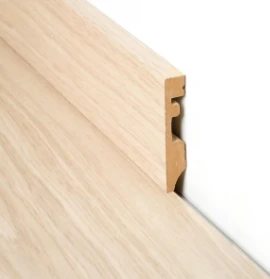Skirting, an essential architectural feature, has found an invaluable ally in aluminum material, transforming both the aesthetic appeal and functional capabilities of modern interiors. Skirting boards, traditionally crafted from wood or plaster, serve the dual purpose of protecting walls from damage while concealing the unsightly junction between the wall and floor. Aluminum skirting boards, however, elevate this essential component to new heights. Known for its lightweight nature, high strength-to-weight ratio, and unparalleled corrosion resistance, aluminum material is ideal for enduring the rigors of both residential and commercial environments. Its sleek and modern appearance seamlessly integrates with contemporary interior designs, lending a clean, minimalist look that other materials often struggle to achieve. Moreover, aluminum skirting is available in an array of finishes and colors, allowing for significant customization to match or contrast with existing décor. This versatility extends to various profiles and heights, ensuring that aluminum skirting solutions can cater to diverse architectural styles and building requirements.
-
Functionality is another area where aluminum material excels. Unlike its wooden counterparts, aluminum skirting is impervious to moisture, making it a perfect choice for high-humidity areas like bathrooms and kitchens where traditional materials may warp, swell, or rot. The low maintenance requirement of aluminum, needing only occasional cleaning to sustain its luster, significantly reduces the long-term upkeep burden. Furthermore, aluminum skirting can be engineered to include channels for concealing electrical wiring and cabling, promoting a clutter-free and safe environment, which is an increasingly important consideration in the gadget-heavy, digitally-connected homes and offices of today. Its resilience against impacts and scratches ensures longevity, maintaining its pristine condition even in high-traffic areas. Sustainability is another noteworthy advantage, as aluminum is highly recyclable, thus supporting greener construction practices and reducing environmental impact.
Installation of aluminum skirting is relatively straightforward and less labor-intensive compared to traditional materials. The use of precise manufacturing techniques results in components that fit together seamlessly, speeding up the installation process and reducing labor costs. Modular designs allow for easy replacements or upgrades, contributing to the adaptability and future-proofing of interiors. Additionally, aluminum skirting is often compatible with modern adhesive technologies that eliminate the need for nails or screws, thus preserving the integrity of walls and floors. This method further simplifies the installation process while providing a clean finish devoid of visible fasteners.
In summary, the integration of aluminum material into skirting solutions represents a significant advancement in interior design and construction. Its aesthetic flexibility, combined with superior durability and functional benefits, positions aluminum as a material of choice for skirting applications across diverse settings. From ensuring efficient protection and maintenance to supporting sustainable construction, aluminum skirting stands out as a highly effective and attractive option. As modern architecture and design trends continue to evolve, the application of aluminum skirting is poised to grow, bringing both innovation and elegance to the spaces we inhabit.















